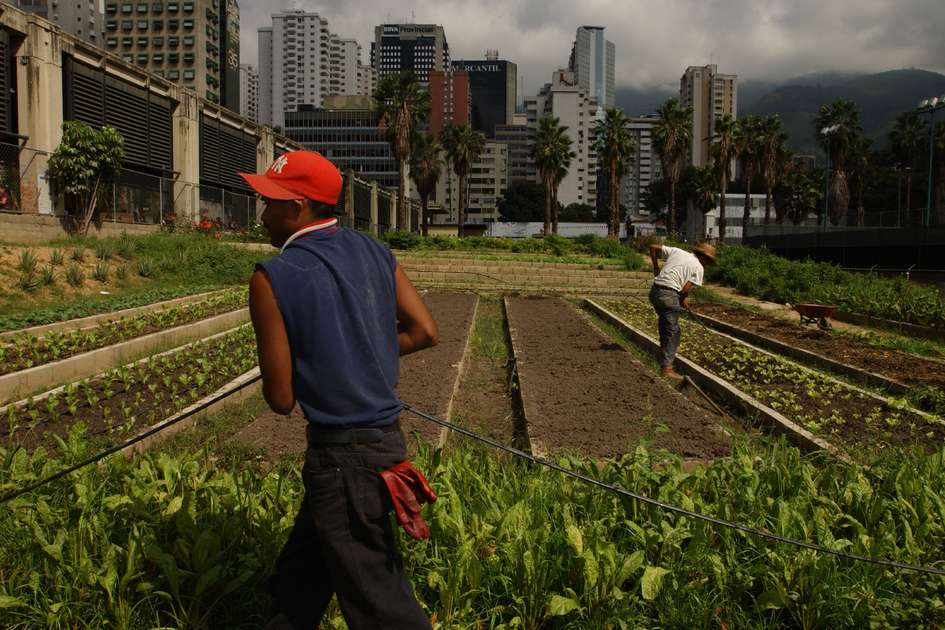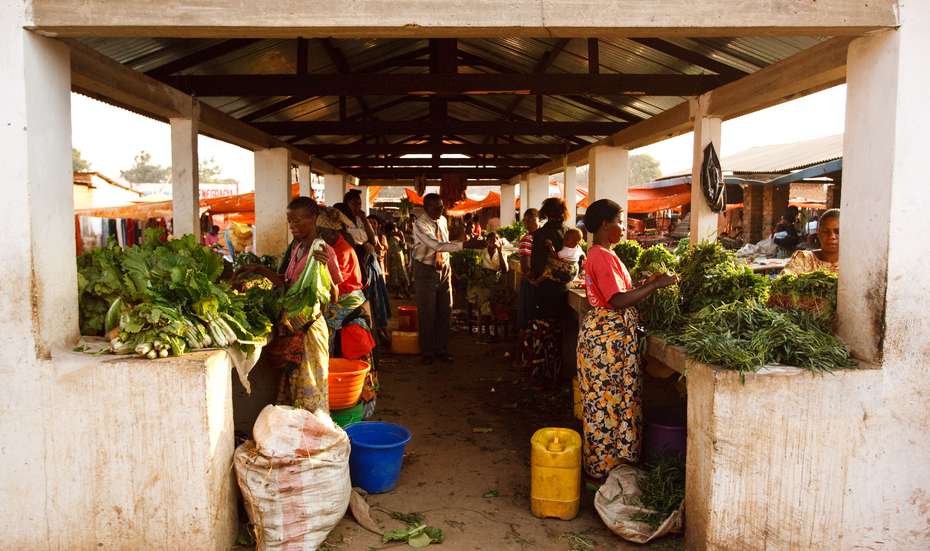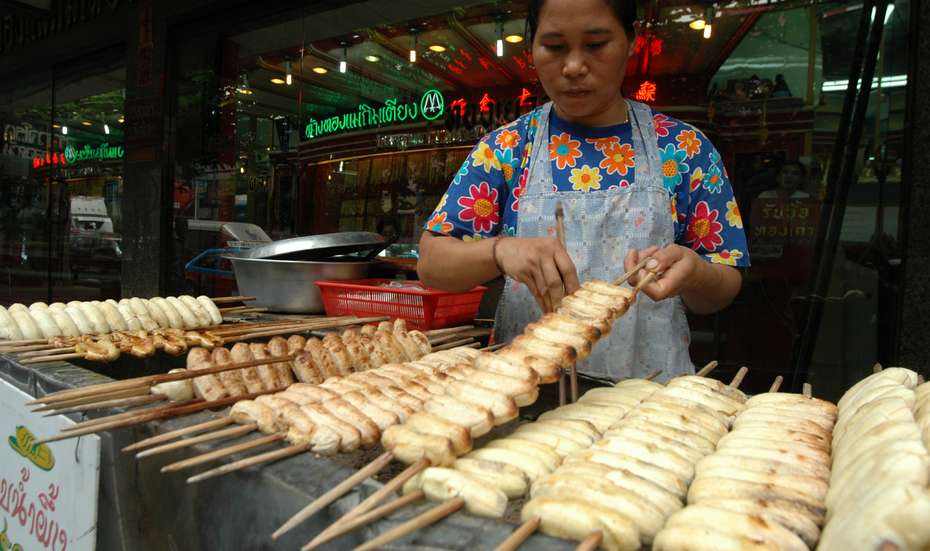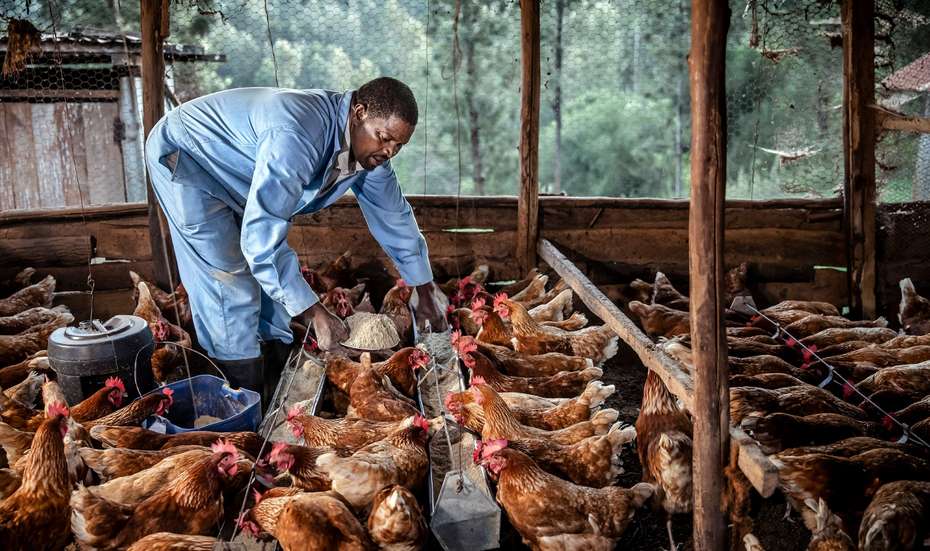Missing on the urban development agenda: new modes of food governance
Africa's urban future will be in areas as yet unbuilt and unplanned, characterized by informality. In this context feeding populations becomes a critical concern – and needs new rules.

Around 70% of the world's food is consumed in urban areas and the urban food system is a considerable driver of greenhouse gas emissions, waste, water usage, land conversion locally and more broadly. This is a major global challenge, but it is also a considerable opportunity, as the system feeding urban areas can also be leveraged to ensure greater sustainability and equity. And so, a crucial question is: How can we sustainably feed urban populations? This is going to be one of the world’s most pressing questions in the coming decades, particularly in the African context.
Since 1990 the number of cities in Africa has more than doubled in number – from 3300 to 7600 – and their cumulative population has increased by 500 million people. By 2050 Africa cities will have become home to an additional 950 million people. This urban future will be in urban areas as yet unbuilt and characterized by informality. Labour opportunities are and will remain predominantly informal, connections to basic services are often informal, housing, food systems and governance systems will be characterised by informality. It is in the context of as yet unbuilt and unplanned cities that feeding urban populations becomes a critical concern.
And yet, despite the challenges of sustainably and equitably feeding urban populations, food has until recently largely been off the urban development and planning agenda, and the urban off the food agenda. This neglect of the urban food question is being remedied. The 2023 FAO state of food insecurity report will have an urban food security focus. The Committee on World Food Security (CFS) recently announced that the focus of the next report of its High Level Panel of Experts will be urban and peri urban food systems. There is now a political moment for embedding urban food in both urban and food policy.
Word of caution
As someone who has been working on urban food issues for over 15 years, I am hugely excited about the emerging opportunities, but also want to issue a word of caution. This is not the first time that food has been on the urban agenda. Historically governments viewed maintaining food supply to urban populations as a fundamental need for political and economic stability – from colonial expansion to feed urban populations in the industrial revolution onwards. Control of the food system has profoundly shaped cities in ways that are not always seen and has shaped local, regional and global geography, economics and politics.
For example, in Zambia the 1937 Market Ordinance (or Lusaka Markets Act) placed markets under the control and management of local authorities, giving them power to regulate market buildings, what goods could be sold, when and at what maximum prices. It also gave them the right to inspect and grade goods. The Act prevented anyone legally selling goods within two miles of a market. It effectively protected certain sanctioned traders from competition with unsanctioned traders, and privileged certain food value chains and rendered others illegal.
Similarly, in Zimbabwe, colonial era zoning schemes legally confined maize milling to industrially zoned areas – imagining a food system supplied by large rural farmers with maize milled on an industrial scale, rendering the thousands of micro-millers in residential areas informal and illegal, viewed as potentially undermining the envisioned food system. Historically the governance of urban food systems was central to the control of urban spaces and economies. It created the boundaries of formal and informal, it shaped the notion what rural and urban should be – created distinct boundaries of urban and rural activities and modes of being – and how they should relate. It has shaped economics, geographies, political power and exclusion.
Planning frameworks block change
So, as we think about future urban food policy and governance, we need to be aware of these largely forgotten histories of food in cities, as they profoundly shape current conditions and potential pathways for change. Many of the planning codes and by laws passed to create these food system conditions are still on the books and block transformative change – for instance, to be more inclusive of street traders. Outdated legislation needs to identified and reformed.
Therefore, in order to move towards sustainable urban food systems new modes of governance are required that are informed by the impacts of historical modes of governance. These pieces of legislation do not only have a technical effect, but also a knowledge effect, they have shaped policy makers and politicians mindsets of what the city ‘should’ look like. I would like to propose four key steps to bring sustainable and equitable urban food systems onto the policy agenda.
Firstly, as food starts to re-enter the urban policy arena, there is a need to generate political will to act. This can be done by identifying the potential of the food system to create greener, healthier and more economically vibrant cities, and to help countries meet key development goals. Food was used to shape wider urban objectives in the past. It is time to reharness that power.
If the food system has the potential to positively impact other development challenges, then asking for greater consideration of the food system isn't adding one more mandate, one more demand on urban governments. Instead, it's providing an opportunity for achievement of sustainable urban development. However, doing this requires targeted narratives and evidence. It requires a wider vision. It requires serious consideration of the costs of NOT doing food work.
The Provincial Government of the Western Cape in South Africa did a back of the envelope costing of the dual burden of malnutrition in 2018 and found that The Western Cape stood to lose R357 billion in household spending from stunting and up to R590 billion from obesity to 2040 (At the time USD1:R11); this translates to a 5% loss to GDP from foregone spending alone. The potential cost of political unrest, the employment and livelihoods provided, the impact of food systems on climate change all need to be considered. And this potentially brings on new partners who can leverage funding and networks.
Secondly, there is a need to development an understanding that urban food systems aren't peripheral to core urban mandates. What historic food governance has shown us is that local governments in fact have immense power to shape food systems, and have used these powers in the past. We also know that urban food systems are shaped by local economies, infrastructures, social policies etc. and so we need to think about transversal (or coherent, multi-sectoral) governance of food. Failure to act transversely may mean that the potential impact of any policy or programme is dulled.
Additionally, since we are globally working in contexts of austerity and resource scarcity, joined up programming across government departments and government tiers has the potential to maximise the benefits of investment.
Thirdly, there is a need to recognize that there is deep embedded knowledge of food system functions and barriers held by local food systems actors and users. While ‘hard’ data on the food system may be limited and contingent, engagement with local actors can generate deep insights for governance. If given the chance, market traders in Zambia can easily explain to local government officials why plans to relocate a market will not work. A chicken and egg seller in Kisumu, Kenya knows why the chickens she sells are local, but the eggs come from across the Ugandan border, and has a deep lived experience of agriculture and trade policy implications.
These actors need to be involved in policy making and implementation. However, we can’t be naïve and assume simple relationships. Deep politics are embedded in these systems, in part due to the earlier food governance histories. So, leveraging these knowledges needs new negotiations of trust, the recognition of entrenched power, and a willingness to engage in the messy politics of urban food systems.
Finally, urban food systems shape and are shaped by factors extending well beyond local governance jurisdiction. There is a need to develop multi-level governance processes that are equally shaped by local and national government interests. Following the UN Food Systems Summit of 2021, an urban food systems coalition emerged. This coalition is attempting to find ways to support these relationships. Too often multilevel governance involves national government simply expecting local government to implement policies and programmes. There is a need for genuine multi-level governance in which urban voices inform national policy agendas.
As global, national and local policy actors sharpen their focus on the immense challenge of feeding our cities, the need to critically engage the ongoing effects of historical planning and governance and adopt new approaches that are transversal, inclusive of a wide range of formal and informal actors, and multi-level.



